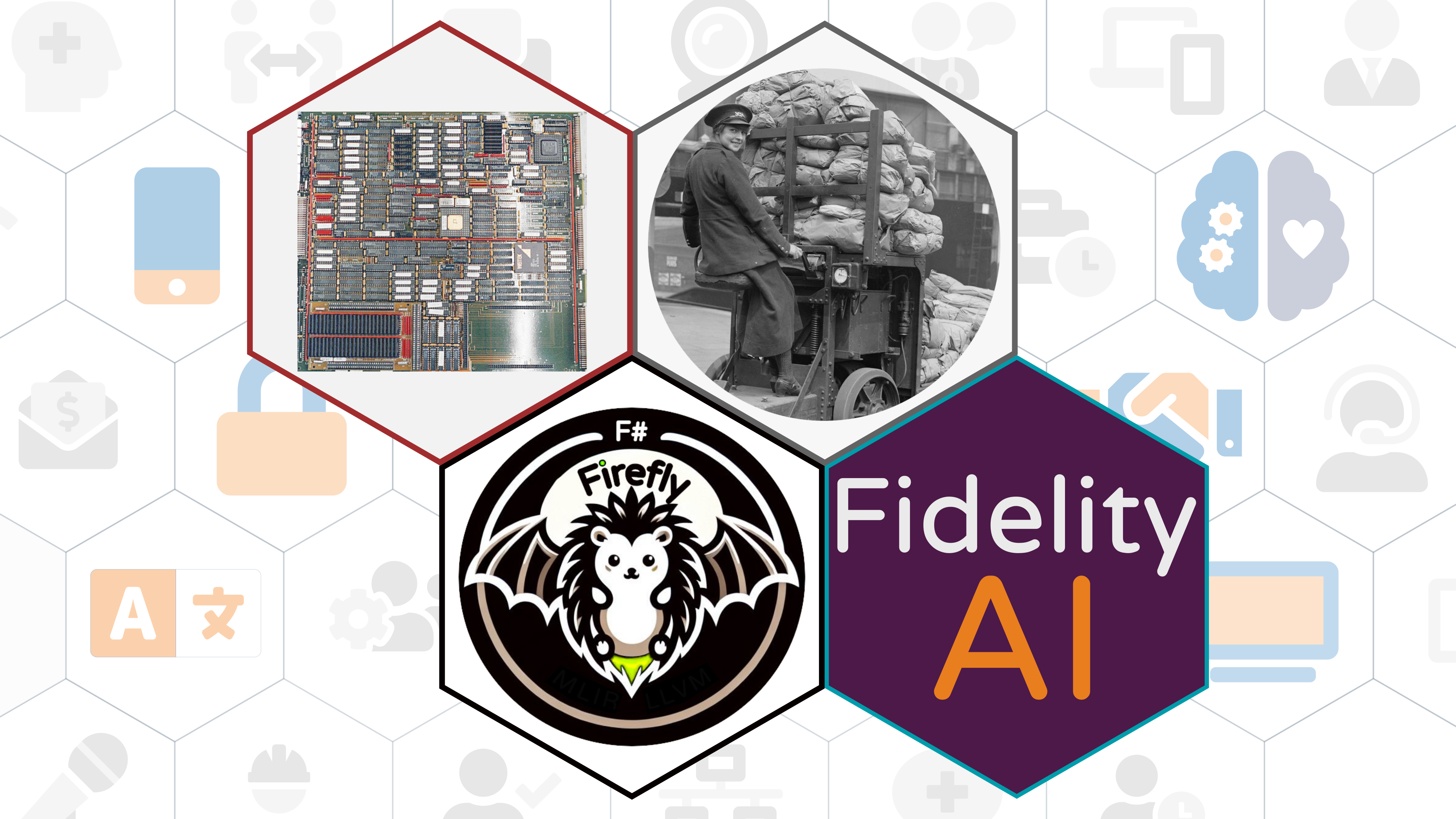Blog posts exploring the concept "Heterogeneous-Computing"
← Back to all tagsA Vision For Unified Cognitive Architecture
AI’s Berlin Wall In our exploration of neuromorphic computing, we examined how specialized hardware might finally deliver on AI’s efficiency promises. But hardware alone cannot solve AI’s most fundamental limitation: the artificial wall between how systems learn and how they operate. 🔄 Updated October 22, 2025 This article now includes cross-references to related blog entries, connecting broader concepts presented here to detailed technical explorations elsewhere. These inline links serve as entry points for readers seeking deeper dives into various topics, while this blog entry illuminates our broader vision.
Read More
Breaking the P vs NP Mystique
The technology industry has developed an unfortunate habit of wrapping straightforward engineering advances in mystical language. When sites online boast of claims to “blur the lines between P and NP,” they’re usually describing something far more mundane: dealing with technology problems more efficiently. The mathematical complexity remains unchanged, but it shouldn’t be used as a barrier to understanding the practicalities. This isn’t cheating or transcending mathematics - it’s recognizing that most real-world performance barriers come from architectural mismatches, not algorithmic limits.
Read More
GPU Cache-Aware Compilation
As we explored in our companion piece on CPU cache optimization, the Firefly compiler’s Alex component is being designed to perform sophisticated transformations that would align F# code with hardware memory hierarchies. When we consider GPU architectures, we encounter a fundamentally different memory landscape that would require equally different optimization strategies. While GPUs currently dominate parallel computing workloads, we view them as a necessary bridge to more efficient architectures. As discussed in “The Uncomfortable Truth of Comfortable Dysfunction”, the industry’s reliance on GPU architectures represents both a practical reality we must address and an architectural compromise we’re working to transcend.
Read More
How Fidelity Solves The Abstract Machine Model Paradox
The blog post “Abstract Machine Models - Also: what Rust got particularly right” makes a compelling case for Abstract Machine Models (AMMs) as a missing conceptual layer between computer science and hardware. The author, reflecting on a failed microprocessor project, discovers that programmers don’t reason about either programming theory or raw hardware, but rather about intermediate mental models that predict extra-functional behavior: execution time, memory usage, concurrency patterns, energy consumption. These AMMs, the author argues, exist independently of both languages and hardware, explaining how a C programmer can transfer skills to Python despite their semantic differences.
Read More
The Advent of Neuromorphic AI
The “AI industrial complex” in its current form is not sustainable. While transformers have delivered remarkable capabilities, their energy consumption and computational demands reveal a fundamental inefficiency: we’re fighting against nature’s design principles. The human brain operates on roughly 20 watts, processing massive volumes of information through sparse, event-driven spikes. (at least, as we currently understand it today) Current AI systems consume thousands of watts to support narrow inference capabilities, forcing dense matrix operations through every computation.
Read More
Leaner, Smarter AI Cloud Systems
The promise of edge computing for AI workloads has evolved from experimental optimization to production-ready enterprise architecture. What began as our exploration of WASM efficiency gains has matured into a comprehensive platform strategy that leverages Cloudflare’s full spectrum of services; from Workers and AI inference to containers, durable execution, and Zero Trust security. A Pragmatic Approach Our initial focus on pure WASM compilation through the Fidelity framework revealed both the tremendous potential and practical limitations of edge-first development.
Read More
Escaping The Steamcar Era of AI
The Steam-Powered Illusion The current AI oligarchy’s greatest deception isn’t about capabilities; it’s about implementation. While hyperscalers tout their models as “flying cars” of intelligence, the reality behind the curtain resembles something far more primitive: akin to steam-powered automobiles complete with teams of engineers frantically shoveling coal into boilers just to keep the engines running. This isn’t hyperbole. Today’s AI models require data centers that consume the water and power output of small cities, yet deliver chronically delayed responses in a technology environment where commercial viability is determined by human interactions measured in milliseconds.
Read More
Categorical Deep Learning and Universal Numbers
A Confession and a Vision A personal note from the founder of SpeakEZ Technolgies, Houston Haynes I must admit something upfront: when I began design of the Fidelity framework in 2020, I was driven by practical engineering frustrations, particularly with AI development. The limitations of a managed runtime, the endless battle with numeric precision, machine learning framework quirks, constant bug chasing; these weren’t just inconveniences, they felt like fundamental architectural flaws.
Read More
Hyping Hypergraphs
The industry is witnessing an unprecedented $4 billion investment to finally set aside the 80-year-old Harvard/Von Neumann computer design pattern. Companies like NextSilicon, Groq, and Tenstorrent are building novel, alternative architectures that eliminate the traditional bottlenecks between memory and program execution. Yet compiler architectures remain trapped in antiquated patterns - forcing stilted relationships into artificial constructions, obscuring the natural alignment with the emerging dominance of dataflow patterns. What if the key to targeting both traditional and revolutionary architectures lies not in choosing sides, but in recognizing that programs are “hypergraphs” by nature?
Read More
Context-Aware Compilation
Modern processors are marvels of parallel execution. A typical server CPU offers dozens of cores, each capable of executing multiple instructions per cycle through SIMD operations. GPUs push this further with thousands of cores organized in warps and thread blocks. Emerging accelerators like NextSilicon’s Maverick or Graphcore’s IPU reimagine computation entirely. Yet most code fails to harness even a fraction of this power. Why? Because choosing the right parallel execution strategy requires understanding not just what your code does, but what it needs from its environment.
Read More
Hardware Lessons from LISP
The computing industry stands at a fascinating juncture in 2025. After decades of general-purpose processor dominance that led to the accidental emergence of general purpose GPU, we’re witnessing what appears to be a reverse inflection point. Specialized architectures are re-emerging as an economic imperative, but with crucial differences from the LISP machines of the past. Our analysis examines how languages inheriting from LISP’s legacy, particularly F# and others with lineage to OCaml and StandardML, are uniquely positioned to realize the advantages of new hardware coming from vendors like NextSilicon, Groq, Cerebras and Tenstorrent: a concept we’re calling Dataflow Graph Architecture (DGA).
Read More
A Unified Vision for Ternary Models
While this idea might be met with controversy in the current swarm of AI hype, we believe that the advent of sub-quadratic AI models, heterogeneous computing, and unified memory architectures will show themselves as pivotal components to next generation AI system design. The elements are certainly taking shape. As we stand at this technological crossroads, AMD’s evolving unified CPU/GPU architecture, exemplified by the MI300A and its planned successors (MI325, MI350, MI400), combined with their strategic acquisition of Xilinx, offers a compelling case study for re-imagining how AI models can operate.
Read More
High Speed Inference
The future of AI inference lies not in ever-larger transformer models demanding massive GPU clusters, but in a diverse ecosystem of specialized architectures optimized for specific deployment scenarios. At SpeakEZ, we’re developing the infrastructure that could make this future a reality. While our “Beyond Transformers” analysis explored the theoretical foundations of matmul-free and sub-quadratic models, this article outlines how our Fidelity Framework could transform these innovations into practical, high-performance inference systems that would span from edge devices to distributed data centers.
Read More
Accelerating Network Communication for Fidelity
As a companion to our exploration of CXL and memory coherence, this article examines how the Fidelity framework could extend its zero-copy paradigm beyond single-system boundaries. While our BAREWire protocol is designed to enable high-performance, zero-copy communication within a system, modern computing workloads often span multiple machines or data centers. Remote Direct Memory Access (RDMA) technologies represent a promising avenue for extending BAREWire’s zero-copy semantics across network boundaries. This planned integration of RDMA capabilities with BAREWire’s memory model would allow Fidelity to provide consistent zero-copy semantics from local processes all the way to cross-datacenter communication, expressed through F#’s elegant functional programming paradigm.
Read More
Next-Generation Memory Coherence
SpeakEZ’s Fidelity framework with its innovative BAREWire technology is uniquely positioned to take advantage of emerging memory coherence and interconnect technologies like CXL, NUMA, and recent PCIe enhancements. By combining BAREWire’s zero-copy architecture with these hardware innovations, Fidelity can put the developer in unprecedented control over heterogeneous computing environments with the elegant semantics of a high-level language. This innovation represents a fundamental shift in how distributed memory systems interact, and the cognitive demands it places on the software engineering process.
Read More
Frontend Unfuzzled: A Gentle Introduction to MLIR
For .NET developers, the term “frontend” already carries rich meaning. It might evoke XAML-based technologies like WPF or UWP, the hybrid approach of Blazor, or perhaps JavaScript visualization frameworks such as Angular, Vue or React. Within the .NET ecosystem, “frontend” generally refers to user interface technologies - the presentation layer of applications. When that same .NET developer encounters terminology like “MLIR C/C++ Frontend Working Group,” something doesn’t quite compute. This clearly isn’t referring to user interfaces or presentation technologies.
Read More
The Shifting Computational Landscape and Returning Primacy of Compilers
The computing landscape has undergone seismic shifts over the past three decades, yet many of our foundational software platforms remain anchored to paradigms established during a vastly different technological era. Virtual machines and managed runtime environments like Java’s JVM and .NET’s CLR emerged during the late 1990s and early 2000s as solutions to very specific problems of that time: platform independence, memory safety, and simplified development in an era of relatively homogeneous computing resources.
Read More
Beyond Transformers
Note: This article was updated September 27, 2025, incorporating insights from recent research and a recent Richard Sutton interview that affirm many of the tenets we have put forward, including the content of this blog entry. In the world of artificial intelligence, a structural transition is underway. For more than a decade, matrix multiplication has served as the computational foundation of neural networks, powering everything from language models like ChatGPT to computer vision systems analyzing medical images.
Read More